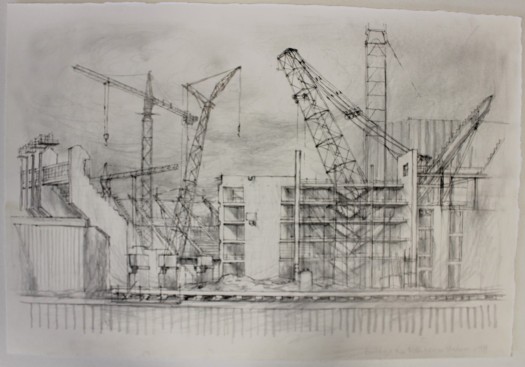
In 1878, Cardiff Football Club (later Cardiff RFC) and Cardiff Cricket Club were granted the use of Cardiff Arms Park, at a peppercorn rent, by the third Marquess of Bute. In 1922, the two clubs amalgamated to form Cardiff Athletic Club, which subsequently purchased the land from the Bute family on the understanding that it should be preserved for recreational purposes. Until the late 1960s, the northern part of the site was used for cricket and the southern for rugby union, with Wales playing home international matches on the same pitch as Cardiff RFC – though, prior to 1953, some matches were played in Swansea.
In 1968, the Welsh Rugby Union (WRU) acquired the freehold of the south ground. Cricket moved to Sophia Gardens and their former pitch was transformed into a new ground for Cardiff RFC. Work then began on redeveloping the south site to provide a National Stadium to be used solely for international rugby matches. Constructed in several stages, it was completed in 1984 with a capacity of 65,000, which was later cut for safety reasons to 53,000.
Within ten years, the WRU was exploring options for further redevelopment of the stadium, whose capacity was now considerably lower than those of the English and Scottish national stadia. Additional impetus came when Wales was chosen to host the 1999 Rugby World Cup. The solution involved a new stadium on broadly the same site. However, the purchase of adjacent land allowed the alignment of the pitch to be rotated from west-east to north-south, and capacity increased to 72,500, all seated. The new stadium would also be equipped with a sliding roof, allowing it to serve as a multi-use venue.
The stadium was designed by Lobb Sport Architecture. The main contractor was John Laing Construction and the structural engineers – who designed the retractable roof – were WS Atkins. 56,000 tonnes of concrete and steel went into the project, which ran between 1997 and 1999. In order to provide the required seating capacity and comply with space restrictions around the site, the stands rake outwards as they rise from the ground, creating a dramatic architectural form.
The total construction cost was £121 million, of which £46 million was lottery funding contributed by the Millennium Commission. This was recognised in the naming of the stadium until 2015. However, in September that year, the WRU announced a 10-year sponsorship deal with the Principality Building Society; as a consequence, the name changed to ‘Principality Stadium’ in 2016.
As well as rugby union, the Millennium Stadium has hosted a variety of sports, including rugby league, speedway, boxing, a stage of the World Rally Championship, indoor cricket, equestrian events, and Welsh international soccer matches. Six FA Cup finals and several other important football fixtures were played there while Wembley Stadium was redeveloped between 2002 and 2007. The UEFA Champions League Final was held there in 2017.
Each year, a number of live music events take place, headlined by major international artists. Particularly noteworthy was a charity concert held on 22 January 2005. Organised in just three weeks, it attracted a host of star performers and raised £1.25 million to aid relief efforts following the Boxing Day tsunami in South Asia.
On a more day-to-day basis, the stadium also offers a range of facilities for conferences, dinners, banquets, balls, parties and weddings receptions.
David Webb, Glamorgan Archives Volunteer
Sources consulted:
- Mary Traynor Collection [D1093/2/53]
- ‘The Development of the National Rugby Ground’ by Kenneth M. Harris, 1984 [D1045/7/4]
- Brochure showing design and construction of the Millennium Stadium produced by WS Atkins, c.1999 [D952/6/7]
- http://www.millenniumstadium.com
- https://en.wikipedia.org/wiki/Cardiff_Athletic_Club
- https://en.wikipedia.org/wiki/Cardiff_Arms_Park
- https://en.wikipedia.org/wiki/Millennium_Stadium
- https://en.wikipedia.org/wiki/Tsunami_Relief_Cardiff
